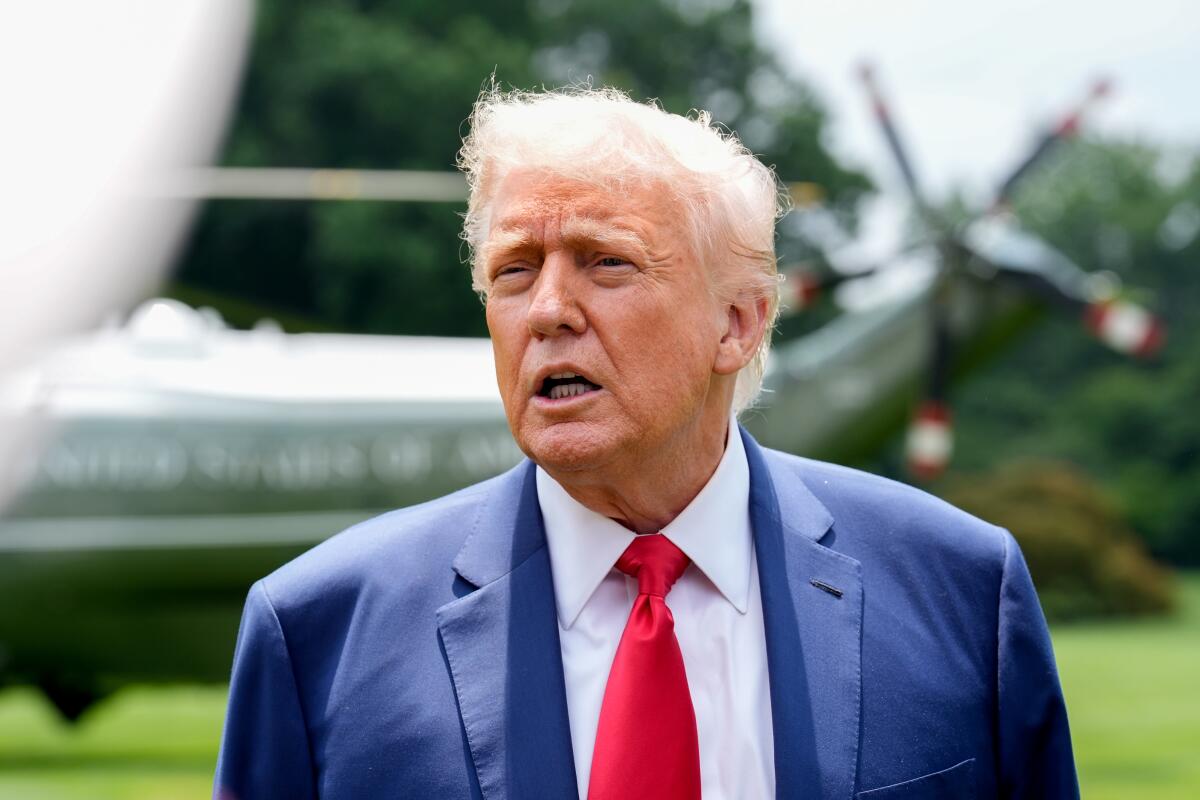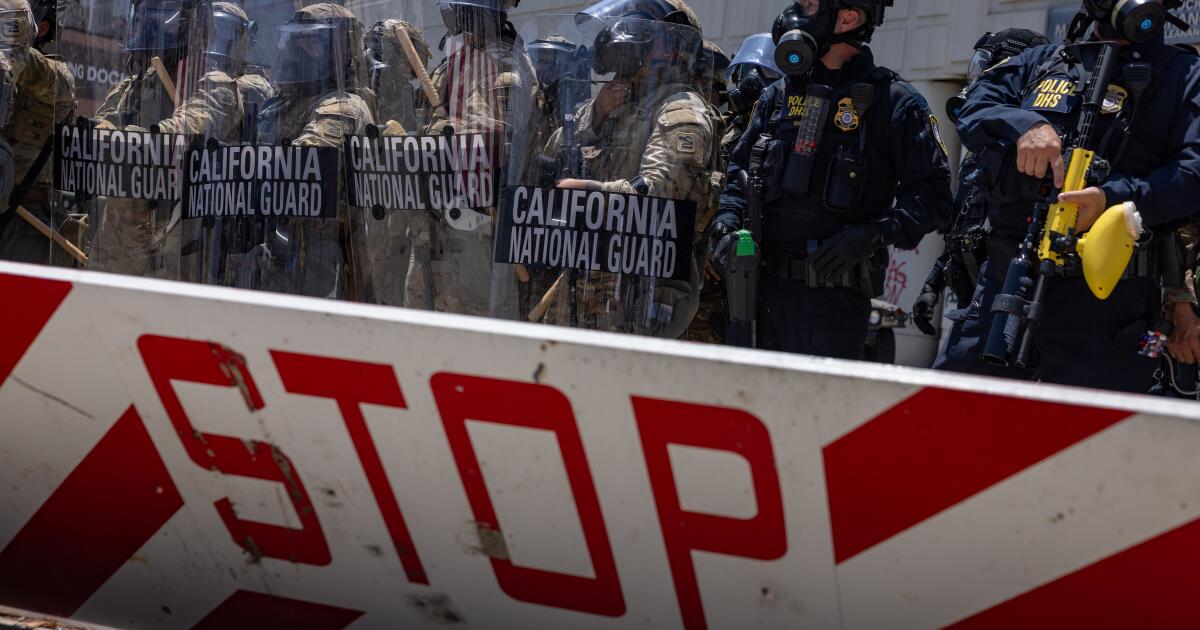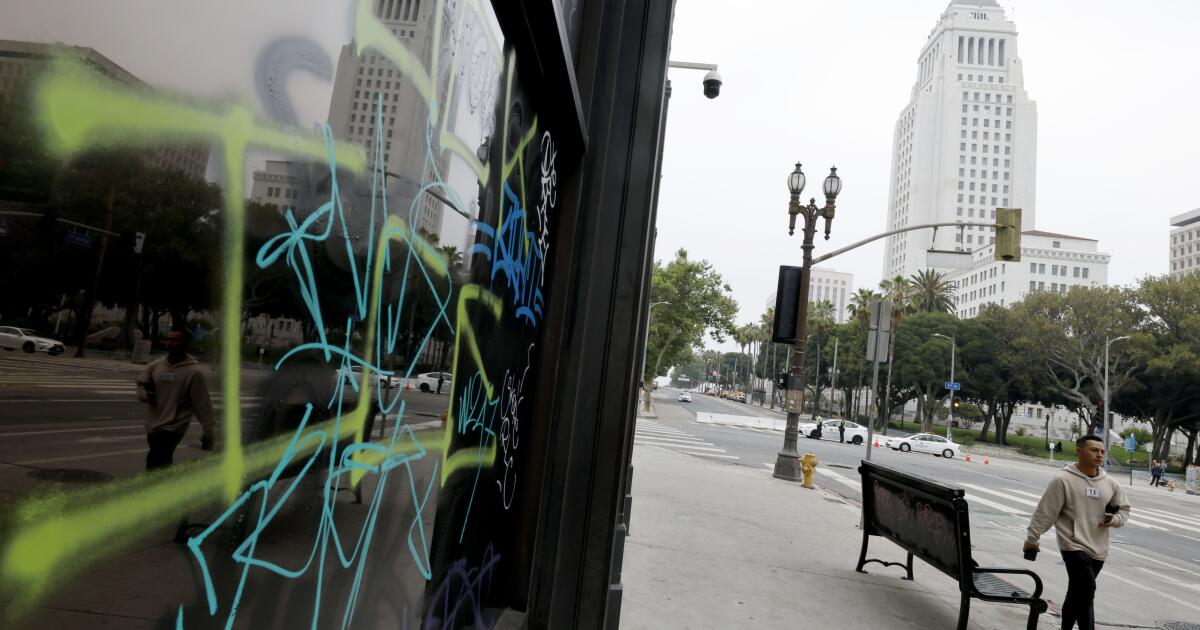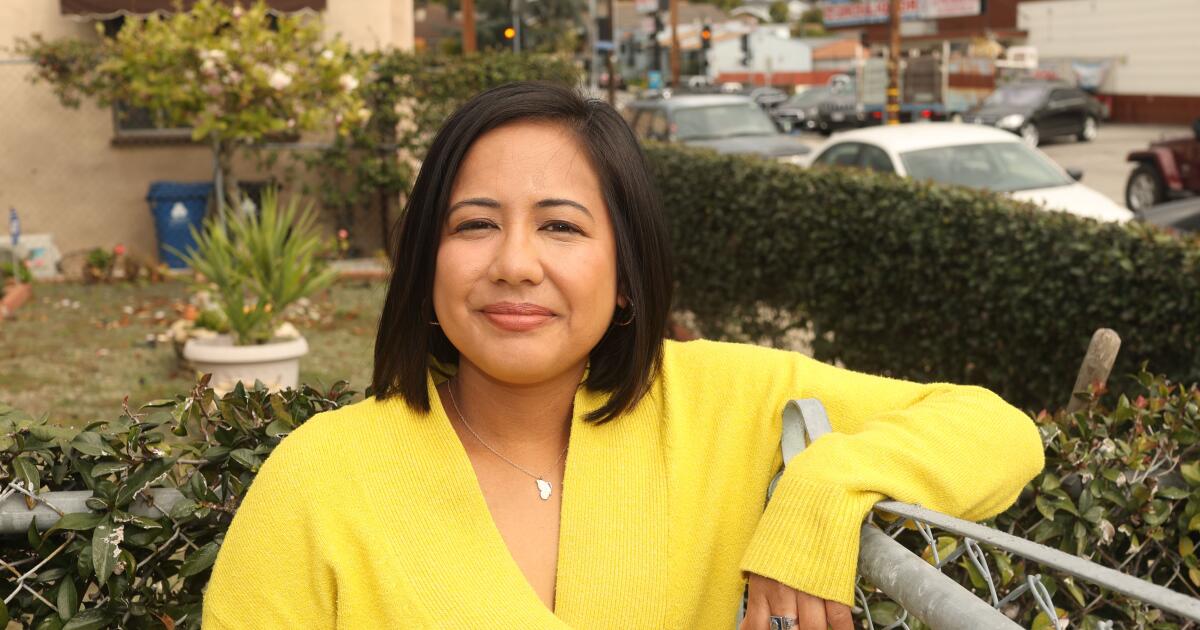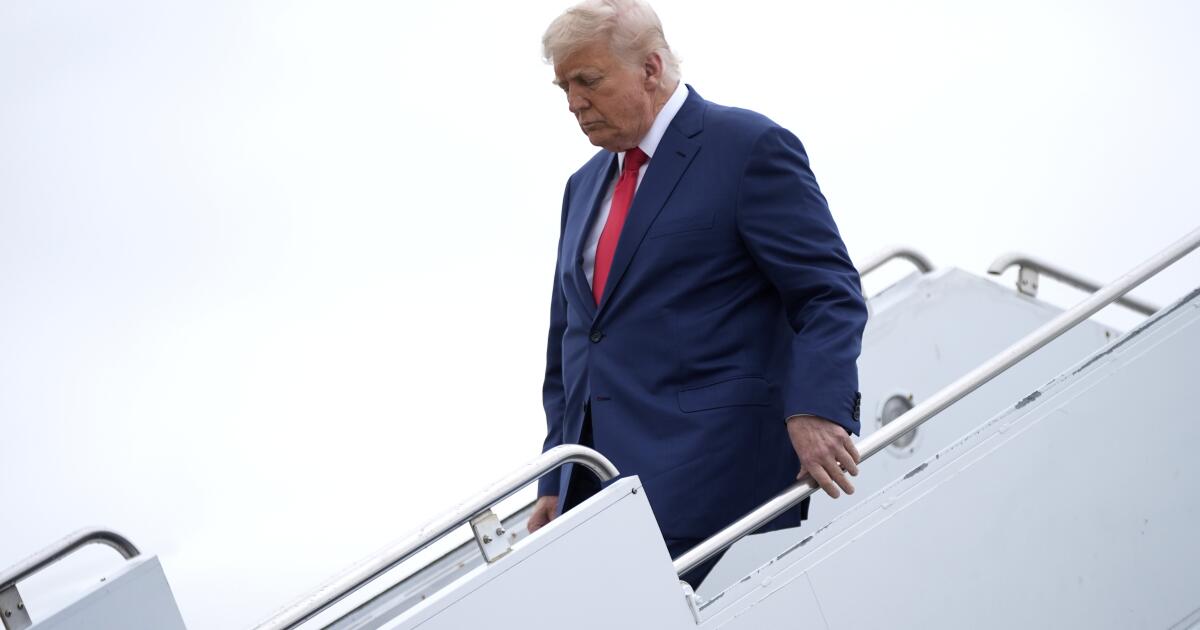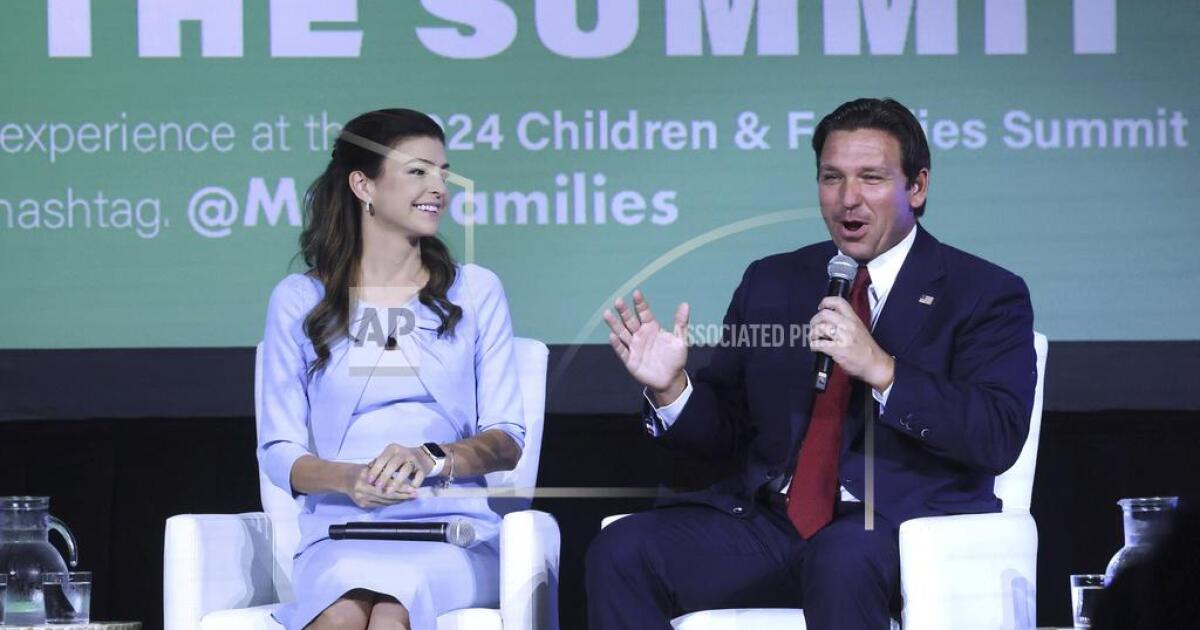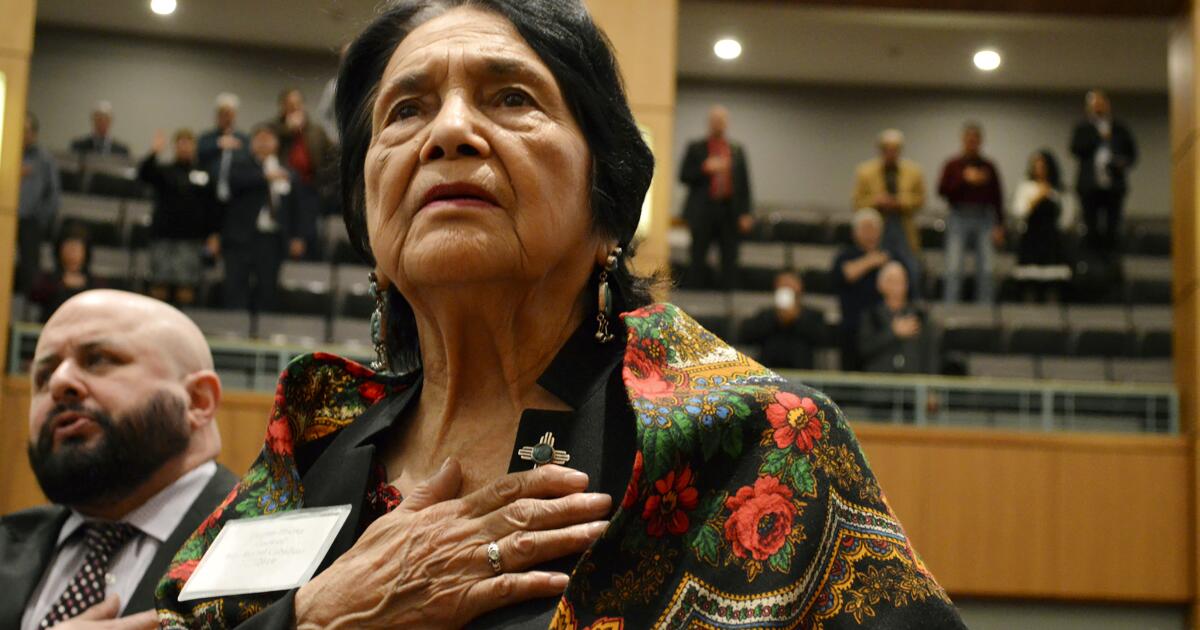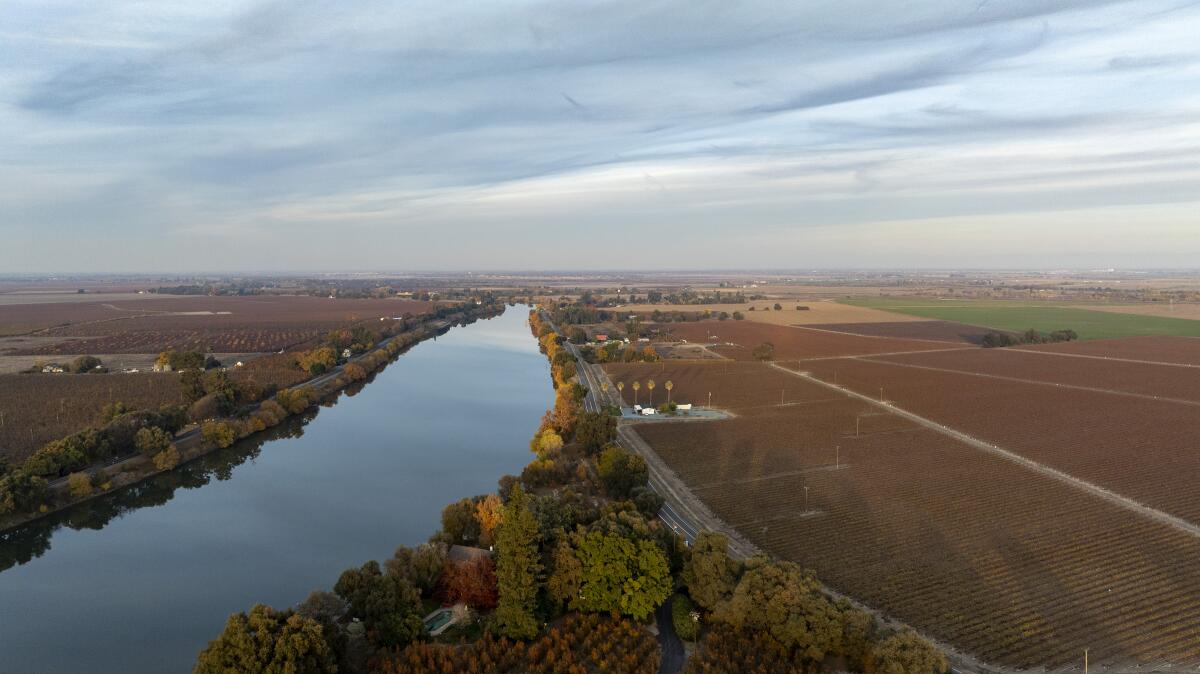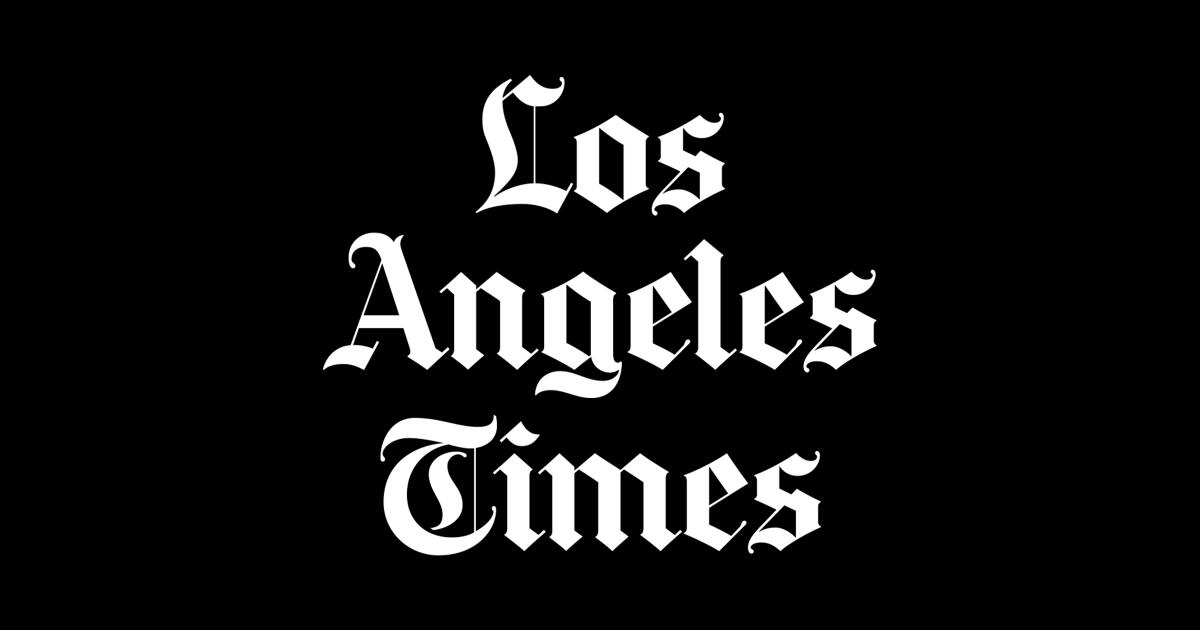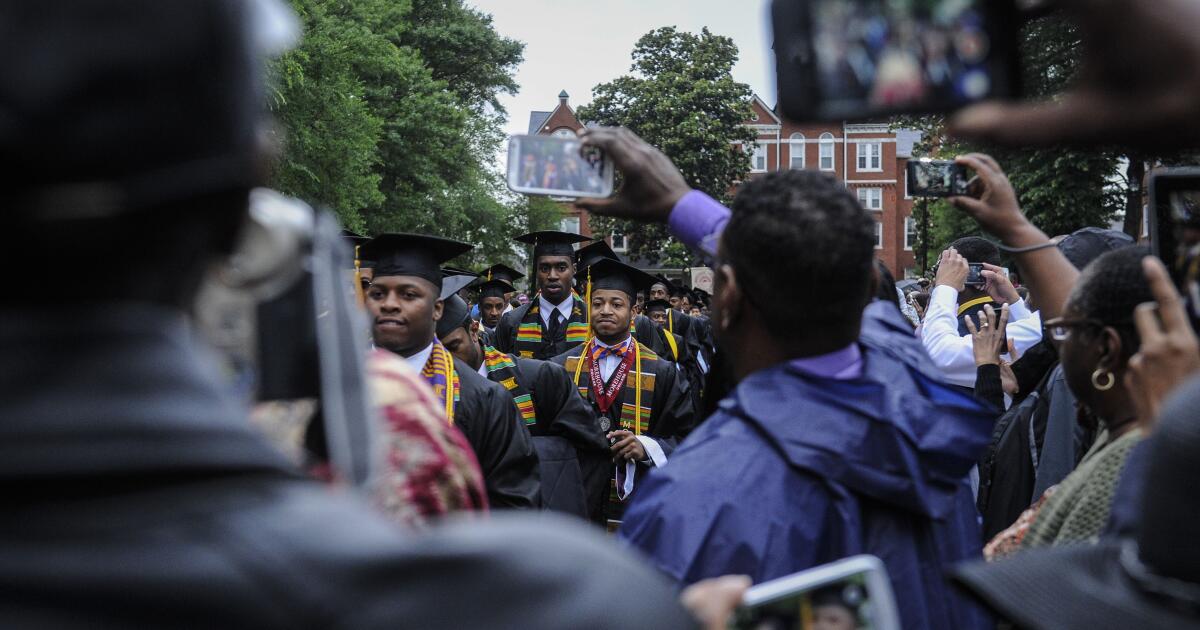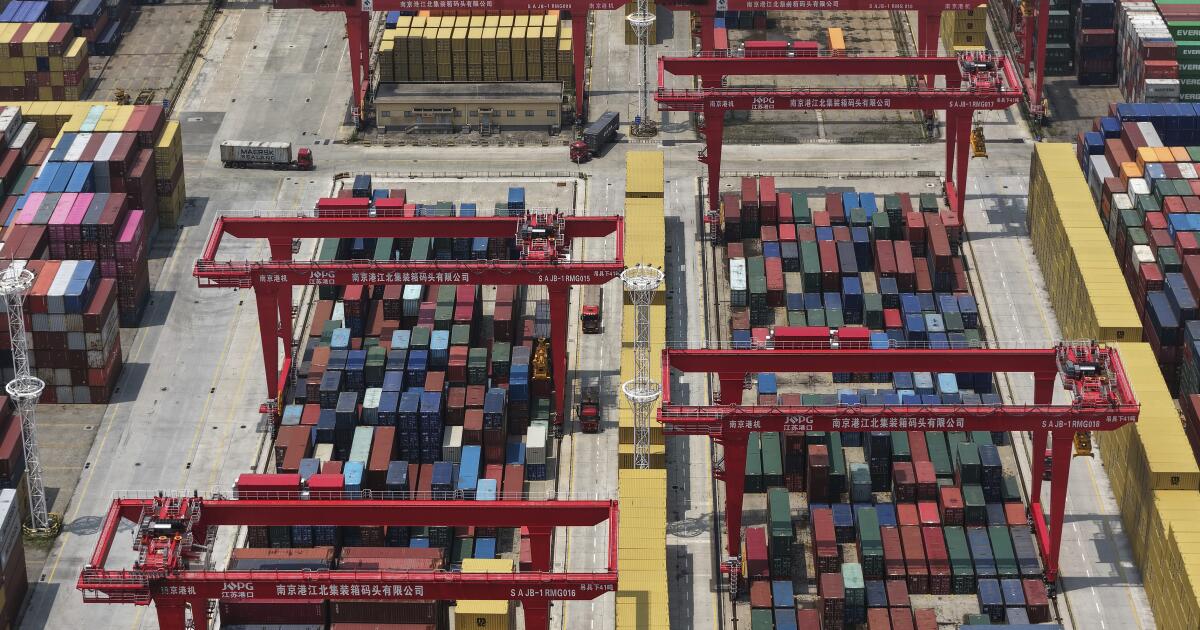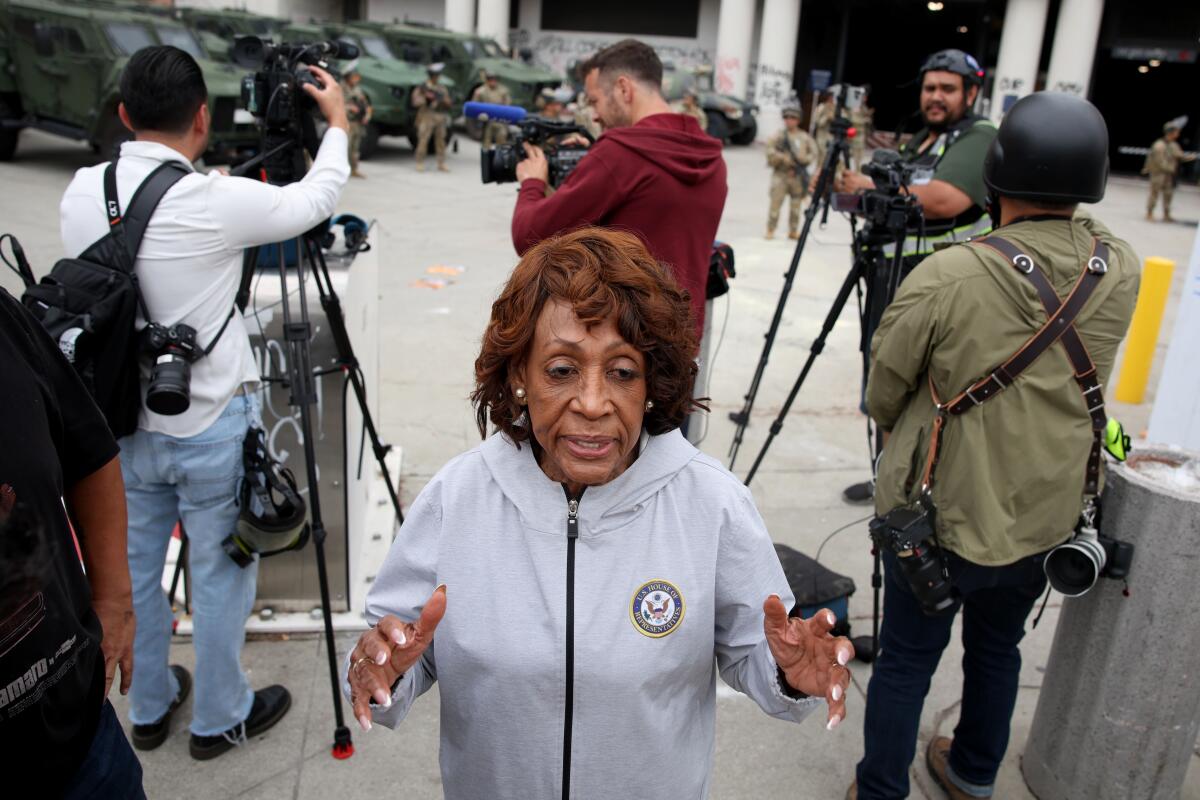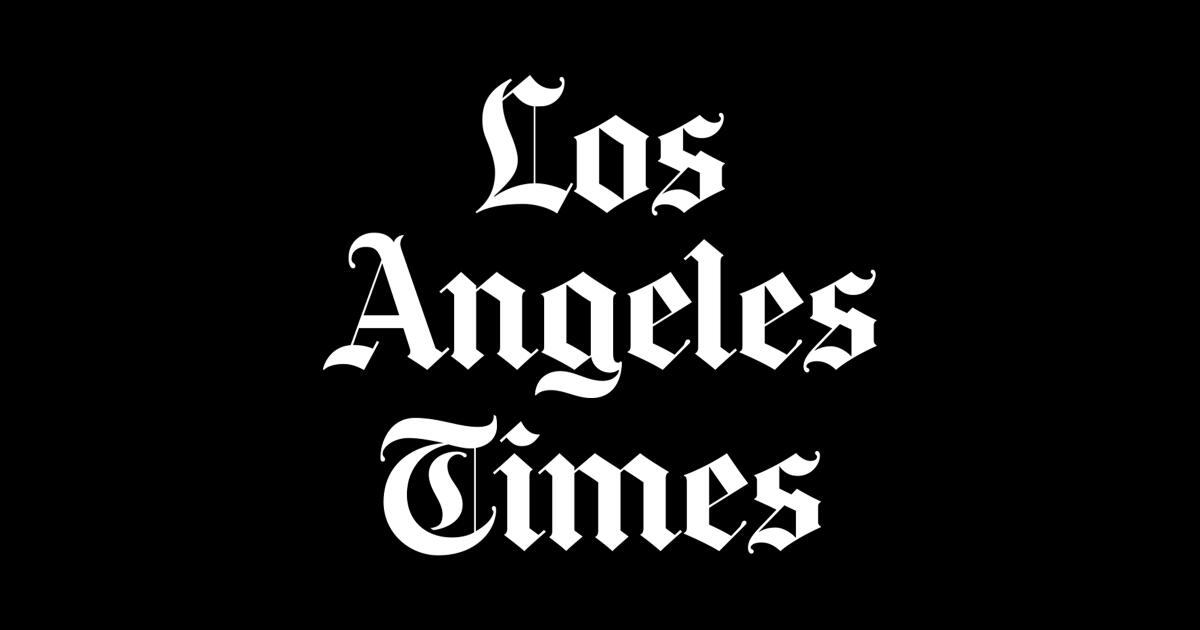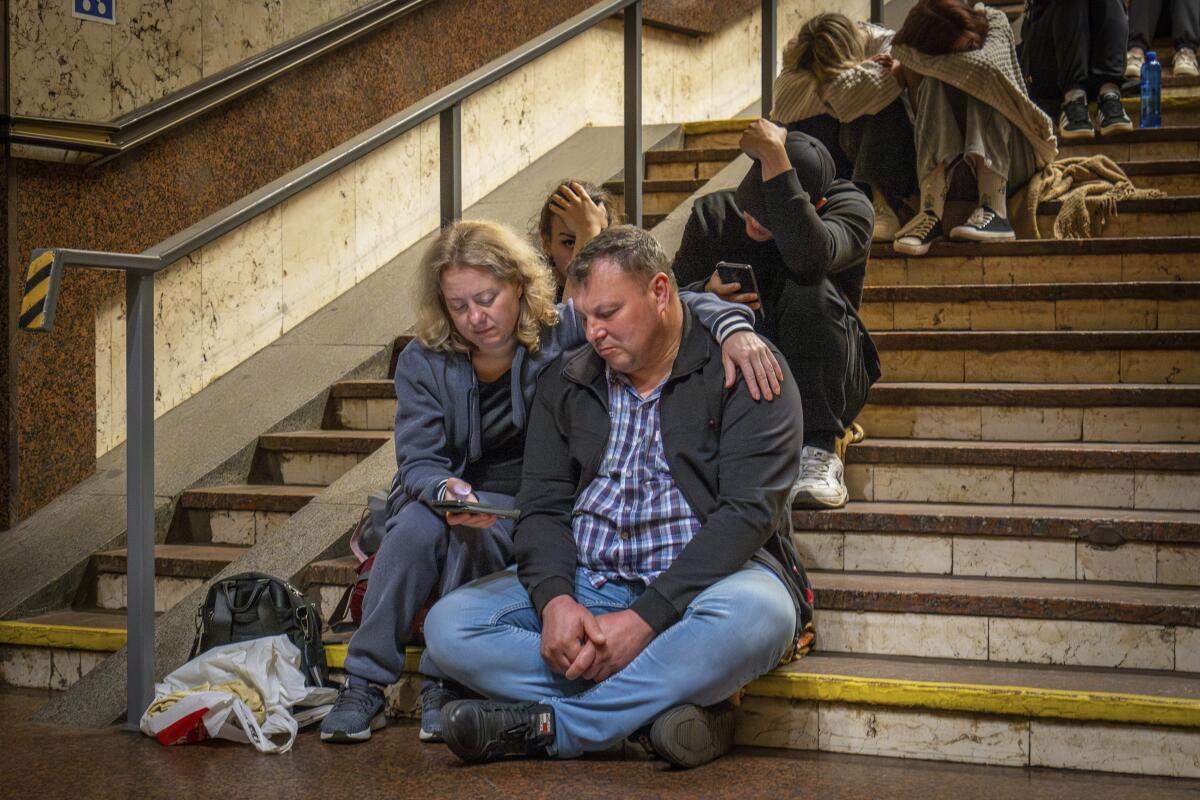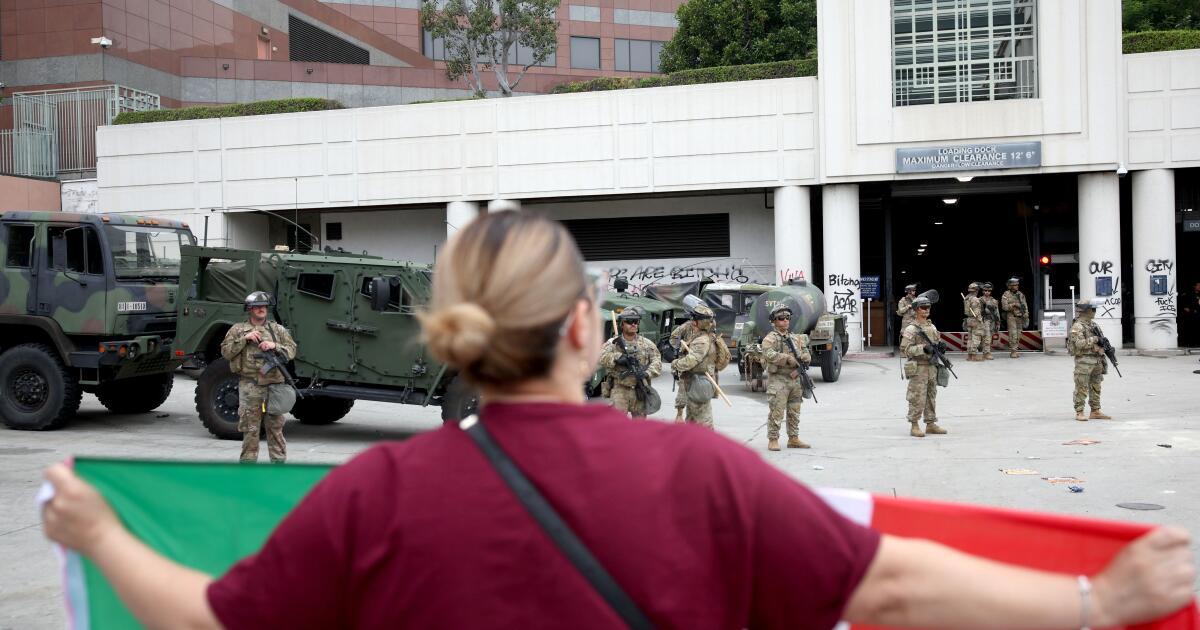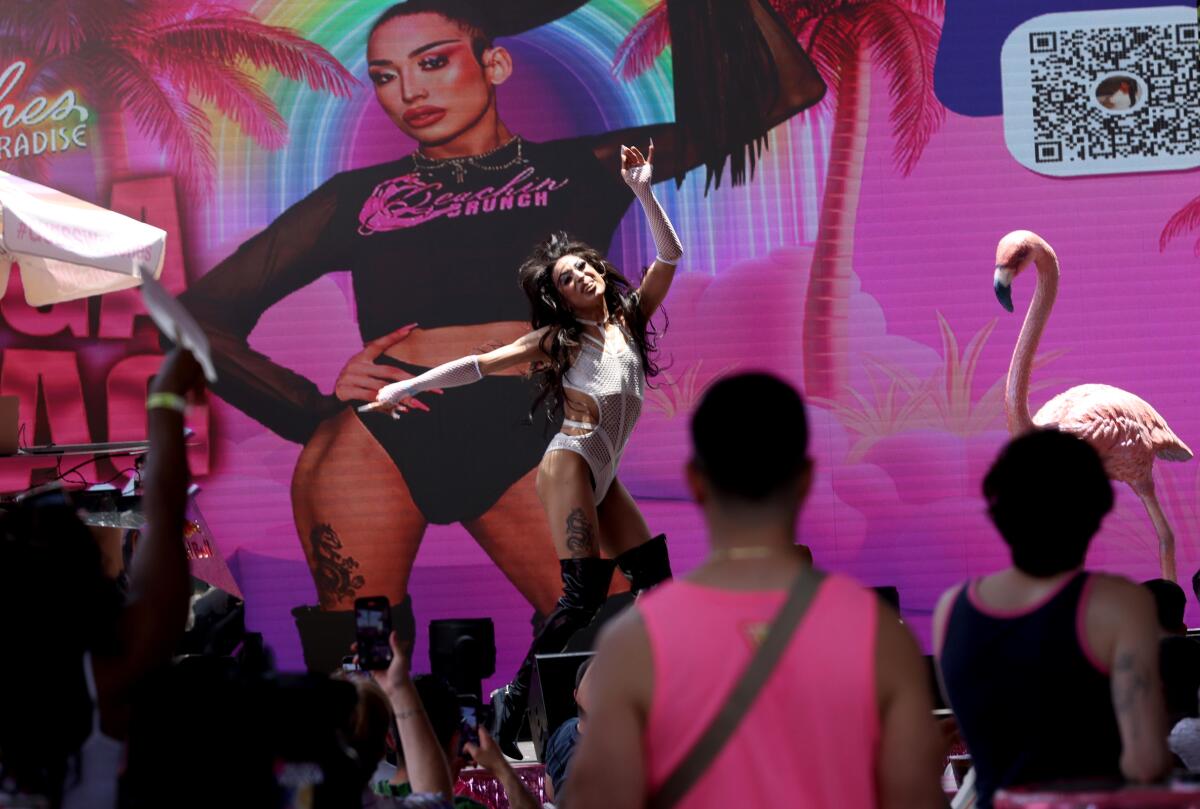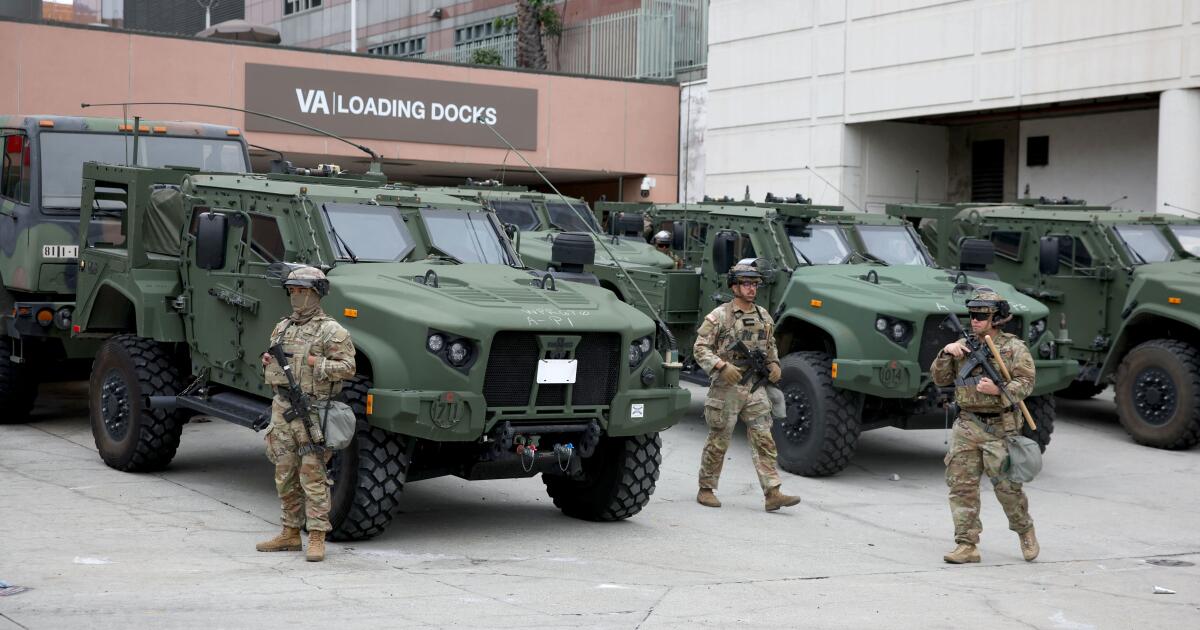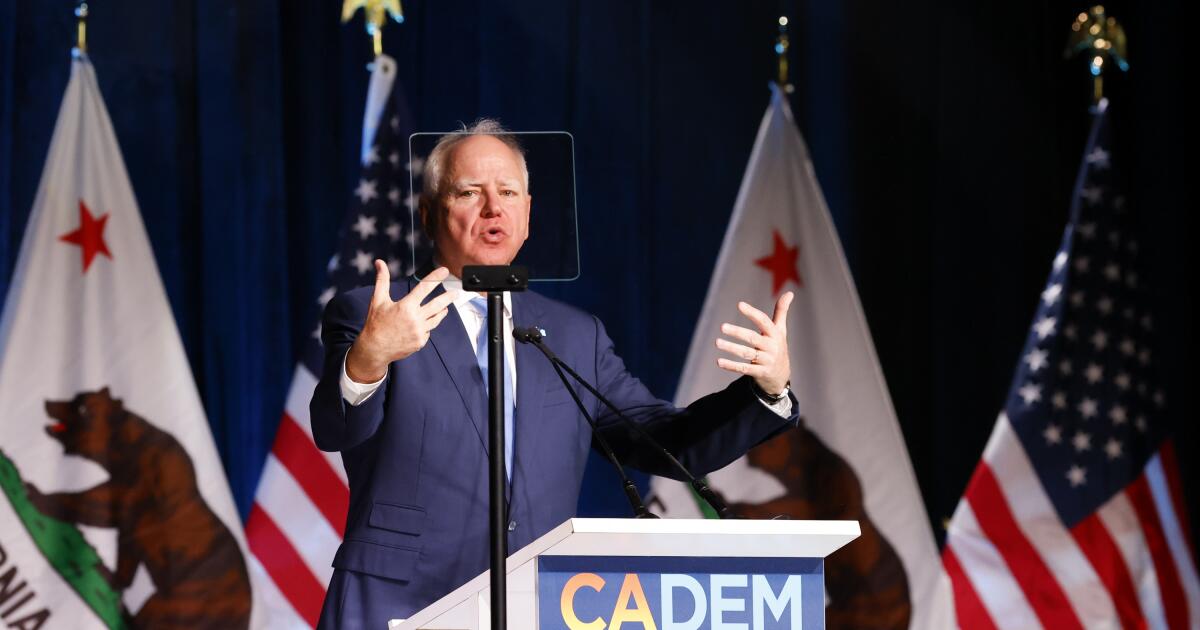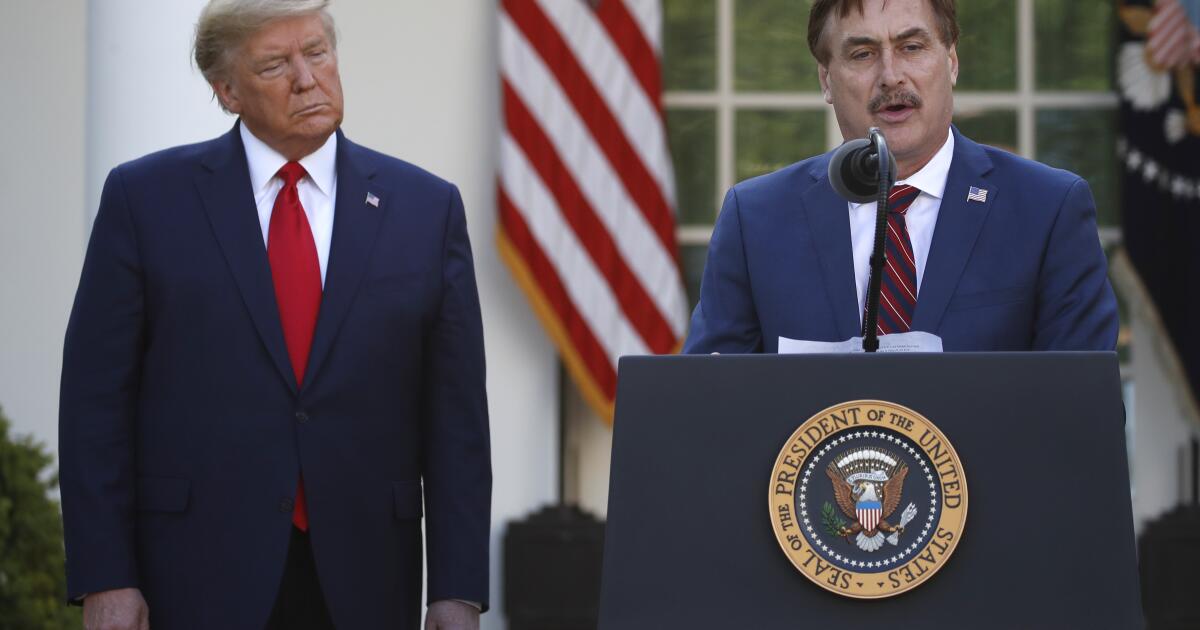L.A. ICE raids draw California governor back into the fight with Trump
SACRAMENTO — Gov. Gavin Newsom resisted a fight with President Trump over transgender youth in women’s sports. He forced his way onto a runway tarmac to make peace with the Republican leader after the Los Angeles wildfires.
Just last week, he hesitated before speaking out when rumors swirled about a massive federal funding cut to California.
Newsom’s restraint ended when Trump usurped the governor’s authority over the weekend by deploying the California National Guard to the streets of Los Angeles to quell protests against immigration raids.
“I’m still willing to do what I can to have the backs of the people I represent and whatever it takes to advance that cause, I’ll do, but I’m not going to do it when we see the trampling of our Constitution and the rule of law,” Newsom said in an interview with The Times. “So we all have our red lines. That’s my red line.”
Newsom said the arrival of troops in the largest city in the Golden State escalated tensions between protesters and law enforcement, which he blamed Trump for intentionally inflaming to sow chaos. Whether Newsom likes it or not, the president’s actions also catapulted the governor to the front lines of a Democratic resistance against Trump that he has been reluctant to embrace after his party lost the presidential election in November.
On Monday, Trump said his border czar Tom Homan should follow through on threats to arrest the governor. The president has cast California as out of control and Newsom incompetent for not stepping in and ending the unrest, or protecting federal immigration agents from protesters.
“I would do it if I were Tom,” Trump said. “I think it’s great. Gavin likes the publicity, but I think it would be a great thing. He’s done a terrible job.”
Newsom also baited Homan: “Come and get me, tough guy.”
Newsom’s position as the leader of a state that has become an immigration target for the federal government offers both risks and rewards for a governor considering a 2028 run for the White House.
Democrats and progressives are thirsty for a leader to challenge Trump and his controversial policies. The National Democratic Party quickly took to social media to publicize the governor’s challenge to Homan to arrest him. Being carted away in handcuffs by officials in Trump’s Justice Department would probably elevate Newsom to Democratic martyr status.
President Trump speaks to members of the media on the South Lawn of the White House after arriving on Marine One on June 9, 2025. Trump on Monday suggested California Gov. Gavin Newsom should be arrested over his handling of the unrest in Los Angeles.
(Yuri Gripas / Abaca/Bloomberg via Getty Images)
“In a way, he was channeling Trump, because he knows how much Trump benefited in the Republican Party from his own criminal conviction,” said John Pitney, the Roy P. Crocker Professor of American Politics at Claremont McKenna College.
Even without an arrest, the political battle is likely to boost Newsom’s standing with Democrats.
But immigration is one of Trump’s best policy issues with voters and it’s not an ideal political fight for any Democrat with presidential aspirations.
“This is the brilliance of Donald Trump,” said Thad Kousser, a professor of political science at UC San Diego. “He’s picking these fights over executive power and over the power of federal government on a political terrain in which he’s most popular: immigration, transgender athletes, DEI, ‘woke’ universities. He’s picking these governance fights where he thinks he can win on the politics.”
For Newsom, the raids provide an opportunity to challenge the president’s narrative that his immigration policy is all about removing criminals and protecting the border, Kousser said.
In interviews, Newsom has repeated that the Trump administration is targeting children in elementary school classrooms and law-abiding citizens who have been in California for a decade or more.
He’s also framing Trump’s deployment of troops to Los Angeles as about more than immigration.
“This is something bigger,” Newsom said. “This is certain power and control over every aspect of our lives. This is about wrecking the constitutional order. This is about tearing down the rule of law. This is about, literally, the cornerstone of our founding fathers, and they’re rolling in their graves.”
Trump’s Los Angeles takeover could derail the work the governor has put in to showcase his more moderate policy positions to America.
While judiciously picking and choosing his battles with Trump, Newsom used his podcast this year to air his belief that it’s unfair for transgender athletes to compete in women and girls’ sports. Through interviews with controversial conservative figures such as Stephen K. Bannon, the governor attempted to demonstrate his ability to be cordial with anyone regardless of their political affiliation.
Newsom has been strategic about the attacks he makes against Trump, such as criticizing the tariffs that are a political vulnerability for the president.
“Anybody who wants to lead the Democratic Party needs the support or at least the acquiescence of the progressive wing of the party, but Democrats need to appeal to the broader general public, and so far, this situation is not helping,” Pitney said of the battle over immigration.
The images streaming out of Los Angeles also create an electoral vulnerability for the governor.
“Perchance Newsom were the Democratic nominee in 2028, you would expect to see pictures of burning Waymos on the streets of Los Angeles with the tagline of ‘what Newsom did for California, he’ll do for America,”’ Pitney said.
Kousser contends that Newsom, in a presidential campaign, will be held responsible for all of California’s shortcomings, regardless of whether he stood up to Trump’s immigration raids.
Although the governor is fighting in the courts with a lawsuit announced Monday, by supporting peaceful protests and using his public podium, there’s little he can do to stop the federal government. The situation highlights the challenge for Newsom and any state leader with interest in the White House.
“This is the blessing and the curse of a governor who wants to run for higher office. When something happens in their state, they get the eyes of the nation upon them even if it’s not the political ground on which they’d rather fight,” Kousser said.
